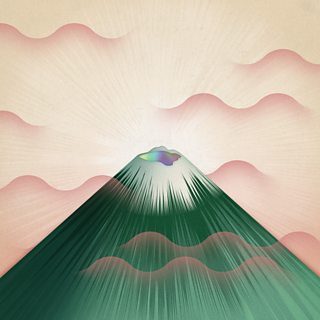- Try
- Rate
- Share
How did you rate this?

The Inside Story
Want to impress your friends with new found origami skills? This is an innovative, step-by-step tutorial to guide you through making a jaw dropping origami jumping frog. Paper folding enthusiast Samuel Tsang practices what he calls 'Mind-FOLD-ness' using the creative pastime to promote feelings of wellbeing and relaxation.
Want to impress your friends with new found origami skills? This is an innovative, step-by-step tutorial to guide you through making a jaw dropping origami jumping frog. Paper folding enthusiast Samuel Tsang practices what he calls 'Mind-FOLD-ness' using the creative pastime to promote feelings of wellbeing and relaxation.
Can you sum up the Make-along project?
This innovative guide takes tutorials to a new level, putting audiences firmly in control. It offers three simultaneous camera angles to view the instructions from multiple viewpoints, as well as a diagram plan so it’s as easy as possible to see which stage you’ve reached. It pauses to allow you time to complete each fold and doesn’t move to the next step until you’re ready. It also offers a review and rewind function.
How did you approach the creative process?
The Make-along was being made available as part of Get Creative, which encourages people to try something new and creative. It was created hand in hand with the 成人快手 Four’s MAKE! Craft Britain and is the first time such a guide has been made available in conjunction with a programme. Origami can be tricky and we wanted something that was challenging but at the same time achievable. The idea for Get Creative is to encourage people to embrace creative pastimes, so this had to be simultaneously engaging and compelling while not putting people off at the first hurdle (do origami frogs jump over hurdles?!). We were really lucky that the independent production company that makes MAKE! were as intrigued by the Make-along as we were at the 成人快手, so we were able to shape what we were trying to achieve together both to engage audiences and to complement the programme. And we found a great origami teacher in Sam.
How is this different to what you normally do?
Video streaming services are packed full of films telling you how to get crafty but we wanted this to be in the hands of the viewers in a way that had never been achieved before. Having the multiple camera angles means that makers can better understand each instruction and we hope that means get more out of completing the task - after all, it should be fun right? The viewer becomes maker and director at the same time, being able to choose the best camera angle which explains each fold. And when you couple that with a diagram view, effectively a fourth camera, and the ability to pause and rewind then you’ve got a really powerful tool and hopefully it feels like the tutor is talking directly to you rather than being disconnected on a screen. Although this was shot like traditional telly, the Make-along has made it much more interactive and hopefully less passive than just watching on a screen.
How was it built?
Firstly, we held a making session, and asked people to follow a conventional video of our origami teacher Sam making a frog. We learnt about when people needed Sam to pause for them to catch up, and how individual people wanted alternative cameras angles at different points in time.
Following this we built, iterated and tested a number of playback features: user control of the viewing angle, a flashcard view, background music that flows through the experience, independent volume controls to let you mix, automatic pausing, chapter navigation, and subtitles.
We segmented the footage according to the complexity of each fold in order to create a step-by-step guide, and described the experience using our object based media data model. Finally, we built our object-based media player, and made sure everything worked well across desktops and tablets. We’re really proud of the end result, and we’re excited about reusing and expanding our player’s capability with more production teams in the near future.
What is the potential for interactive guides?
Craft is definitely having a resurgence. Social media has opened up a world of possibilities with makers sharing their outcomes (good and bad) as well as patterns and ideas with a growing community of like-minded enthusiasts. It would be great to think that we can build on the experience of the Make-along by offering other opportunities where audiences feel like they’re absolutely in control and part of a programme and an experience. And the opportunities are unlimited: as well as origami similar tutorials could be used for food, gardening, sport (imagine Andy Murray helping you master a killer forehand). Hopefully it’s a way of audiences getting more from programmes and their experts.
More new ideas for you on Taster
-

Dance Passion: Beneath Still Waters
Explore the science of motion in this interactive experienceObject based media -

Dance Passion: NOISE
This interactive dance film explores the real-life experiences of people who don't conform to stereotypesObject based media -

Seeking New Gods
Experience Gruff Rhys's Seeking New Gods in 360掳 audioObject based media
